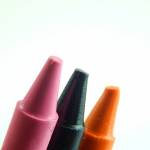A broken nail can be more than just a cosmetic annoyance; it can be a painful and frustrating interruption to daily activities. Fortunately, there are several strategies you can employ to repair a nail until it grows out and regains its strength. This article will guide you through understanding the different types of nail damage, immediate protective actions, and effective temporary fixes. With the right approach, you can seamlessly mend a broken nail and prevent further injury.
Understanding Nail Damage
Types of Nail Breaks
Nail breaks can vary significantly in severity and type. A minor crack that does not reach the nail bed is often less concerning than a deep split that causes pain and potential infection. Some common types of breaks include:
- Surface cracks that only affect the upper layer of the nail
- Deep splits that extend into or past the nail bed
- Horizontal breaks, also known as ‘tears,’ which may cause part of the nail to lift away
- Vertical splits that can cause discomfort and are vulnerable to snagging
Each type of break requires a slightly different approach when it comes to repairs, although the core principles of sanitation and protection remain constant.
Common Causes of Nail Breaks
Understanding the causes of nail breaks can help in preventing future incidents. Some of the most frequent culprits include:
- Accidents or trauma to the nail
- Brittle nails, which can be a result of a lack of moisture or a nutritional deficiency
- Regular use of nail polish remover containing acetone, which can weaken nails over time
- Excessive exposure to water, leading to softened nails that are prone to tears
By identifying and mitigating these factors, you can maintain stronger, healthier nails.

Immediate Actions to Protect a Broken Nail
Clean and Sanitize
The first step after any nail injury is to clean and sanitize the area to prevent infection:
- Gently wash your hands with soap and warm water, being careful not to aggravate the break.
- Apply an antiseptic to the affected area to eliminate any bacteria.
Trimming and Filing
After sanitation, proceed with trimming and filing to prevent further damage:
- Trim any jagged edges with sanitized nail scissors or clippers.
- Use a fine-grit nail file to smooth out the edges delicately.
- Filing should be done in one direction to avoid stress on the weakened nail.
Temporary Fixes for a Broken Nail
Nail Glue Method
For a quick and convenient temporary fix, nail glue can be a lifesaver:
- Apply a small drop of nail glue directly onto the break.
- Press the broken pieces together and hold firmly for a few seconds until the glue sets.
- Be careful not to glue your fingers to the nail or each other.
The Tea Bag Method
The tea bag method is a popular home remedy that provides a flexible reinforcement to the broken nail:
- Cut a small piece of a clean tea bag to cover the break.
- Apply a thin layer of nail glue over the break.
- Place the tea bag piece onto the glue and let it dry.
- After the glue has dried, apply an additional layer of glue over the tea bag material.
- Once thoroughly dry, gently file the area to smooth out any rough spots.
Silk Wrap Technique
Silk wraps are a more professional method and can be found at beauty supply stores. They involve applying a piece of silk wrap material over the break, then sealing it with a special resin or glue, which hardens to add strength to the nail.
To give readers an idea of the differences between methods, here’s a Comparison of Temporary Fixes:
| Method | Durability | Difficulty | Appearance |
|---|---|---|---|
| Nail Glue | Moderate | Easy | Visible |
| Tea Bag | Moderate | Easy | Semi-Visible |
| Silk Wrap | High | Moderate | Natural |
With these immediate and temporary solutions, a broken nail can be effectively managed until it grows out. However, it’s crucial to understand that these are not permanent fixes and may need to be reapplied or changed periodically.

Long-Term Care and Prevention
Nail Strengthening Treatments
For those looking to not only fix their broken nail but also prevent future occurrences, long-term care is key. Engaging in routine nail strengthening treatments can significantly improve the resilience of your nails:
- Incorporating a nail strengthener or hardener into your nail care routine can fortify your nails over time.
- Look for products containing keratin or biotin, as these ingredients are known to support nail growth and strength.
- It’s also beneficial to use a moisturizing product, such as cuticle oil or hand cream, to maintain the flexibility of your nails, reducing the likelihood of breaks.
By committing to a consistent care routine, you can reduce the chances of dealing with another broken nail in the future.
Nutrition for Nail Health
Strong nails are often a reflection of good nutrition, so consider adapting your diet to include foods rich in vitamins and minerals essential for nail health:
- Protein is fundamental for nail growth since nails are made of keratin, a type of protein.
- Foods such as leafy greens, nuts, and eggs are high in biotin, a vitamin that has been shown to boost nail strength.
Do not underestimate the power of adequate hydration – drinking plenty of water throughout the day is crucial for maintaining overall health, including that of your nails.
Nail Maintenance Tips
Routine nail maintenance is another cornerstone of long-term nail health. Here are some helpful tips:
- Regularly trim your nails to prevent them from getting too long, which can make them more susceptible to breaks.
- Filing your nails into a rounded shape can reduce the risk of snagging and tearing.
- Wearing gloves during housework or gardening can protect your nails from harsh chemicals and physical damage.
By following these maintenance tips, you support the health of your nails, allowing you to enjoy a strong, beautiful set day in and day out.
When to See a Professional
Signs of Infection
Occasionally, a broken nail can lead to an infection, which requires professional medical attention. Be vigilant for signs such as:
- Redness, swelling, and warmth around the nail
- Pus or discharge indicating the presence of an infection
- Severe pain that does not improve with at-home care
If you experience any of these symptoms, it’s crucial to consult with a healthcare provider or a dermatologist for appropriate treatment.
Serious Breaks and Damage
Certain types of nail damage are beyond the capability of home repair and necessitate the expertise of a professional:
- If the break involves your nail bed, or you have sustained a complete nail avulsion (a nail that has been entirely removed or is hanging off), seeking medical advice is essential.
- In cases where the aesthetics of your nail are significantly compromised, a professional manicurist or nail technician can provide solutions that are both functional and cosmetically pleasing.
Sometimes, professional intervention not only heals the nail more effectively but also saves you from potential complications.

Conclusion
Throughout the article, we have explored various methods and techniques to fix a broken nail until it grows out. From immediate actions to temporary repairs and long-term care practices, there’s a wealth of knowledge available to treat and prevent nail damage. Patience and consistent care are indispensable since nails grow slowly, and it is paramount to give them time to recover and strengthen. Your nails are an extension of your body and by treating them with the respect and care they deserve, you can minimize the inconvenience and discomfort of nail breaks.
FAQs
Q1: How long does it usually take for a broken nail to grow out?
A1: On average, fingernails grow at a rate of about 3 mm per month. However, the time it takes for a broken nail to fully grow out can vary depending on your age, nutrition, and health. You can typically expect it to take about 3 to 6 months for a fingernail to grow from the cuticle to the tip of the finger.
Q2: Can I still apply nail polish to a broken nail?
A2: Yes, you can apply nail polish over a broken nail to camouflage it, but it’s best to wait until the nail has been properly fixed with one of the methods described in the article. Also, use non-acetone nail polish remover to avoid further weakening the nail.
Q3: Is it safe to use super glue to fix a broken nail?
A3: While some people do use super glue to fix broken nails, it’s not recommended because it can be harsh on the skin and more difficult to remove. Opt for nail glue specifically designed for nails, as it’s formulated more gently and is safer for this use.
Q4: What dietary changes can help improve nail strength?
A4: A balanced diet rich in proteins, omega-3 fatty acids, zinc, iron, and vitamins A, C, and E can fortify your nails from the inside out. Adding supplements like biotin to your diet after consulting with your healthcare provider may also provide benefits.
Q5: Are there any natural remedies to help fix a broken nail?
A5: Yes, natural remedies such as using vitamin E oil to moisturize the nail and surrounding skin or soaking the nail in a mixture of warm water and apple cider vinegar to reduce the risk of infection are sometimes recommended. However, for more severe breaks, the methods outlined in this article are likely to be more effective.


